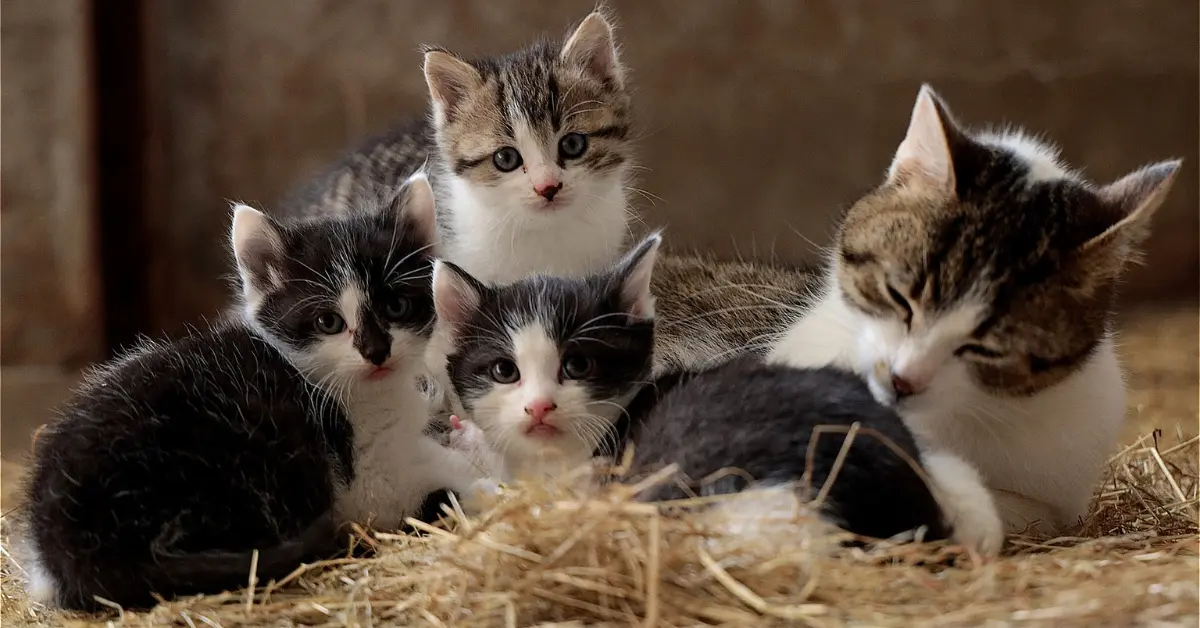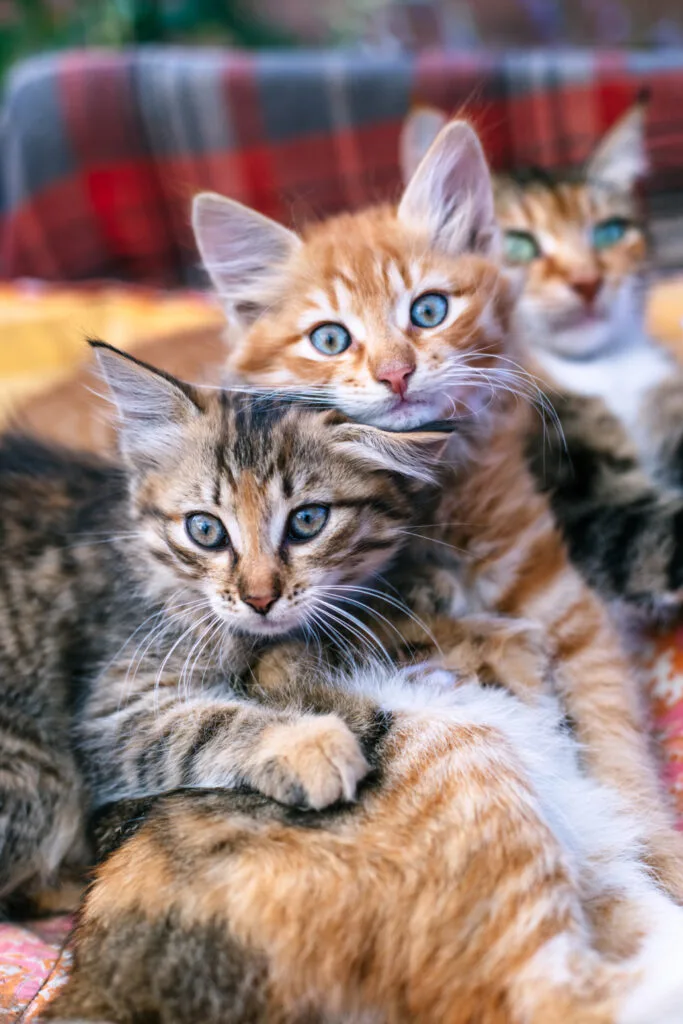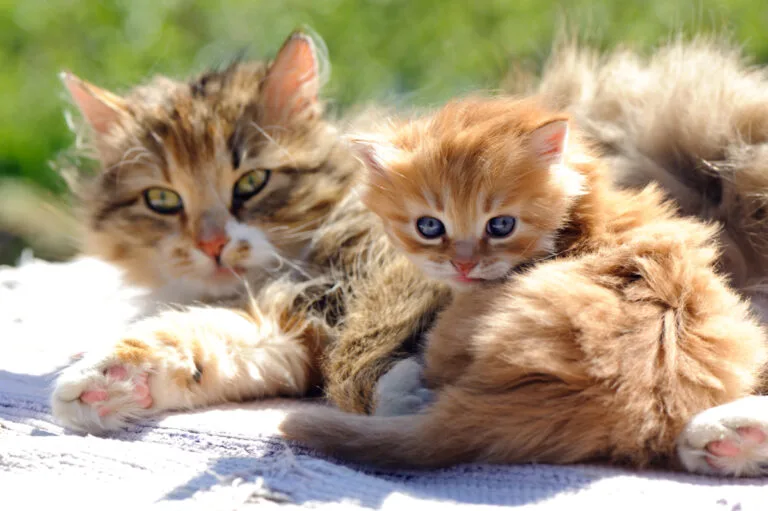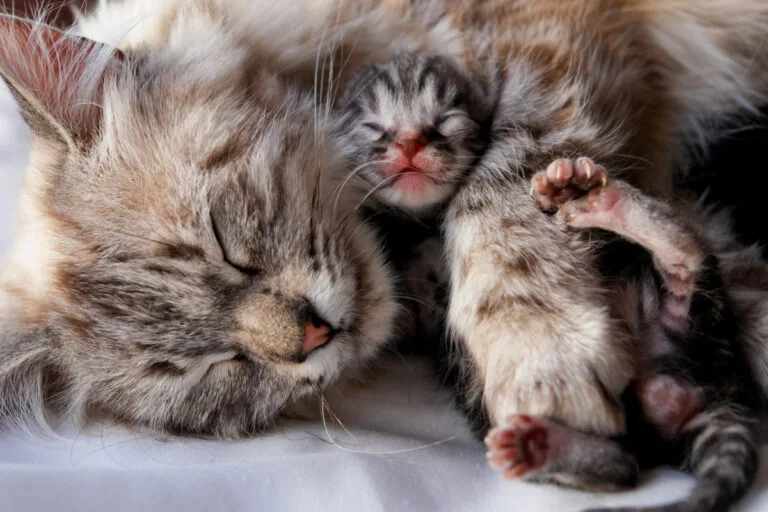How Many Kittens Can A Cat Have?
Due to the prevalent overpopulation of cats and a high number of cats reaching animal shelters annually, it is not uncommon to question “How many kittens can a cat have?”
The average litter size for a healthy cat is usually four to six, but can consist of anything between one to twelve kittens.

Larger litters are usually observed in pedigree breeds. Feral and moggie cats will usually have 3 to 4 cats on their litter. Aside from its breed, the mother cat’s genetic history, age, and health will influence the size of its litter.
How many kittens are in a litter?

We’ll cover what affects litter size. For the most part, moggies or no-pedigree cats can give birth to their kittens without any problems.
Is it your cat’s first time getting pregnant? First-time moms usually produce smaller litters as compared to those that have been pregnant several times. The act of breeding stimulates the release of more eggs into the uterus over time. This is why cats that have been through multiple pregnancies in the past tend to have bigger litters.
Moreover, you should also consider the health of your pet. Infections like feline peritonitis can decrease a litter’s size during pregnancy. Even if the cat produces a sizable litter, some of it may not thrive due to poor health inherited from its mother.
The breed of your cat may also dictate the size of its litter. Siamese and Persian type breeds often yield bigger litters, with some consisting of 12 kittens. Here, you can also read more about cats and what are the most expensive breeds.
Lastly, the nutritional health of the mother cat will affect its pregnancy. It will impact the size of litter, the health of the kittens, and the queen’s ability to nurse.
Overall, if the cat will get pregnant three times a year with up to four kittens per litter, it can produce about 50 to 150 kittens in its lifetime.
How many times can a cat get pregnant in a year?

The estrus period among cats can occur 2 to 4 times a year, with each cycle lasting for about 15 to 22 days. A female cat that’s been mated while in heat will have a shorter estrus cycle of just four days. However, if the cat in heat doesn’t get mated, its estrus cycle will continue for up to 10 days and then recur after 15 days.
On average, an unspayed cat can be fertile and give birth three times a year. However, cats that are kept indoors may cycle all year long since they are exposed to artificial light. As their bodies can’t detect the start and end of the days, their system might get tricked to experience more estrus cycles.
Usually, it’s safe for cats to be pregnant several times a year. As long as you get your pregnant cat checked regularly, it will have a safe gestation.
If you wish to prevent pregnancies, it’s best to have it spayed as soon as possible. Female cats should be spayed upon reaching maturity so their hormones have settled and their body has fully grown. If this is the case, you should get more information about how to tell if your cat is pregnant.
How many kittens can a cat have in its lifetime?
It varies depending upon the cat breed, size, and other factors described in this article. There can be an average of four to eight kittens in each litter and it is pretty normal if it goes from one to 12 kittens.
On average, a cat can start reproducing after six months of age. Other than this, a cat can possibly have 180 kittens in its entire life as a cat can reproduce throughout its life span of 10-12 years.
If you want to know how many kittens your cat is going to have, you should determine the cat’s litter size.
Determining your pregnant cat’s litter size

If your cat is pregnant and you’re keen to know the litter size, the best person to call is the vet. The veterinarian will conduct an ultrasound exam on your cat to count the litter. Take note that the vet can only estimate the number of kittens during the early stage of pregnancy. Later in the gestation cycle, your cat can undergo an X-ray test to determine the exact number of kittens in the litter.
It’s very important to know this information so pet owners can prepare for the new addition to their homes. Also, it will give the vet an idea of how the delivery will be. The vet can also determine if your cat is a candidate for a C-section instead of normal birth. Remember, though, that some cat litter may be reduced if some kittens have poor health. You should also ensure that the mother cat will nurse all the kittens to increase the litter’s rate of survival.
Cat pregnancy timeline

Cat pregnancy lasts for up to 67 days or roughly 2 months. Some cats may have an extended gestation of about 72 days. During the first 15 to 18 days of your cat’s pregnancy, you’ll notice that its nipples are enlarged and reddish. The cat may also experience morning sickness.
Upon reaching the first month of pregnancy, you will notice that your cat’s tummy is starting to swell even more. In the latter part of the pregnancy, your cat will gain about 1 to 2 kilograms, depending on the size of the litter. You may also observe that the queen is more affectionate or maternal as it prepares for delivery.
Also, cats that are in the later stage of pregnancy will have increased appetite. This is due to the growing kittens, but you should also have your cat checked for potential worm infestation. A week before your cat starts to give birth, it will experience pre-labor and it will seek warm spots in the house to prepare for delivery. During this phase, you may also notice milk droplets along with the nipples of your cat as well as poor appetite. Once your cat enters labor, it will keep licking its abdomen and genitals to stimulate the birth of the kittens.
Conclusion
So how many kittens can a cat have? The number of kittens a cat can have depends on the age, health, breed, and condition of the feline. Most of the time, it can be anywhere between 1 to 4 kittens for moggies and up to 12 for pedigree breeds.
We hope the information in this article will help prevent the overpopulation of cats and improve the life quality of your pets.
